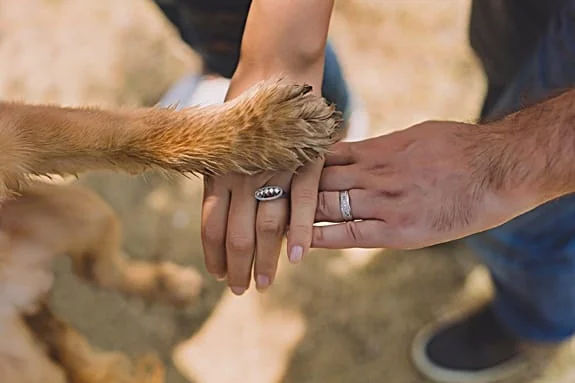Red Ant Bite on Dog: If you let your dog run off-leash in open areas, there’s a good chance he will encounter ants.
Table of Contents
Solenopsis Invicta, also known as red ants, are a common nuisance in the environment in certain areas, especially within the Southeastern United States.
In most instances, ants are considered non-threatening insects – unless someone is having a picnic! However, Red Ants can be very dangerous to dogs. Dogs that get bitten or stung on the feet or legs may yelp in pain, hold up the affected limb, and develop lameness. You may notice redness and swelling between the toes.
Below is a chart outlining common traits and characteristics of red ant bites on dogs:
| Trait | Description |
|---|---|
| Appearance | Red ant bites on dogs typically appear as small red bumps or welts on the skin. The bites may be raised and surrounded by redness. |
| Multiplicity | Red ants often bite multiple times in a localized area, leading to clusters or patterns of bites on the dog’s skin. |
| Swelling | Bites from red ants can cause localized swelling around the bite site. The degree of swelling can vary depending on the dog’s reaction. |
| Itching and Discomfort | Red ant bites usually result in itching and discomfort for dogs. They may scratch or lick the affected area excessively. |
| Pain | Red ant bites can cause pain or tenderness, particularly if the dog has been bitten multiple times or if the bites are in sensitive areas. |
| Allergic Reactions | Some dogs may have an allergic reaction to red ant bites. Symptoms may include facial swelling, difficulty breathing, or hives. |
| Secondary Infection | If the dog excessively scratches or licks the bite area, it can lead to a secondary infection. Signs may include redness, swelling, and discharge. |
| Healing Time | In most cases, red ant bites on dogs heal within a week or two with proper care and treatment. |
Important: Other types of ant bites in dogs include large black ants and biting black ants. Although not typically considered dangerous to pets, large black ants can cause a lot of pain and irritation to the skin of a dog after being bitten.
Do Red ant bite or sting?
Red Ants do not actually sting. These Ants are part of a group of insects that sting the order Hymenoptera, which includes bees and wasps.
Ants sting by grabbing and holding with their jaws and injecting venom (enlightenment) with a stinger on their abdomen (the back of the body). They do not die after being pierced.
Symptoms of Red Ant Bite on Dogs
Within 15 minutes of being bitten by a Red Ant, the skin may become swollen, red, and hard. After several hours, the sting site appears bright red, elevated, one to two centimeters wide.
These areas can be very itchy. Sometimes eruptions can occur (as in humans), which look like enlarged areas of skin filled with white or yellow fluid. The sting area also looks like a flat red circle about one to two centimeters wide on the skin.
Is Red Ant Bite dangerous for dogs?
They could be. If a dog is bitten by several ants at once, the injected venom can lead to total severe reactions. In rare cases, some dogs may even develop an anaphylactic reaction from just one sting.
Symptoms of the reaction include difficulty breathing, lying on their side and not responding to the owner’s voice or touch, seizures, and pale skin or bruises. Reactions can be emergency and veterinary care should be taken as soon as possible.
Why are red ants dangerous to dogs?
Red ants (also known as fire ants) are dangerous to dogs because they release alkaloid toxins when attacked, causing an allergic reaction. Individual reactions vary, with some dogs experiencing mild symptoms such as paw chewing and itching, and red skin, while ant bites can lead to death in other dogs.
Also Read: Dog Jowls: Everything You Need to Know About Dog with Jowls
The same is true for humans. When it comes to pets, dog size is important. A small dog, such as a large dog, is less likely to be adversely affected by a single fire ant sting. Dogs are particularly susceptible to fire ant bites due to their inquisitive nature – usually sniffing fire ant mounds in the mud and dirt, as well as stepping into their territory.
Safe removal of Red Ants from dogs
If you find Red Ants on your dog, brush them quickly. You may want to use a cloth or gloves to keep Red Ants from falling on you. It may be helpful to clean your pet with a hose. Unfortunately, it is very difficult to remove ants when they are bitten, as their jaws are strong and used to keep themselves from injecting toxins. Trying to get rid of ants can make them more provocative and more stinging, so be as quick as you can.
Red Ant Stings Treatment

Some stings on them are not a concern if the pet is behaving normally. Within 24-72 hours, sting sites should improve. If your pet is itchy or uncomfortable, Benadryl or diphenhydramine may be used or use an ant bite relief formula. Your veterinarian can give you the right dose based on the age and bodyweight of your pet. Coldwater baths can help reduce inflammation in their skin. Avoid using over-the-counter creams or lotions unless your veterinarian says they are safe.
Also Read: German shepherd Lifespan: What is the Average Life Expectancy of a German shepherd?
If your pet is very itchy or uncomfortable, the veterinarian may give them steroid injections or dispense steroid pills. Antibiotics are usually not needed unless your pet develops an infection due to stings.
If your pet shows symptoms beyond the itch, it may be a sign of a reaction. Your veterinarian may need to take other measures, such as epinephrine injections or hospitalization, to make sure your pet is recovering well.
Preventing Red Ant Bite
If you see Red Ant mounds treat your yard. There are many products available, be sure to read the labels so they can be used safely around your dog. If you have an ant problem in your home, you may also need to treat your home.
Do not use outside traps inside the house as they will attract ants. Clean up any food or drink spills. Keep food, including dog food, in tightly closed containers.
There are no preventative products to protect dogs from Red Ants. Keep in mind that they are attracted to moisture, so avoid wet areas when running your dog. Do not let your dog stay around the nose or sniff out ant mounds.
If you live in an area with a lot of Red Ant colonies, think about getting boots for your dog to wear during the walk.

